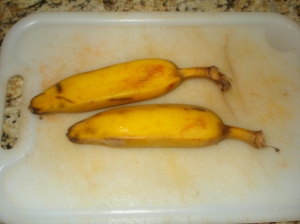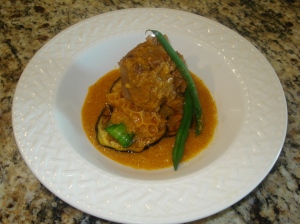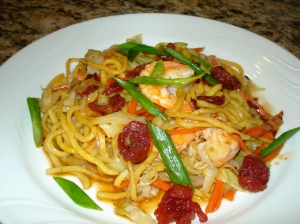This morning, I had an epiphany. As i was sitting in front of my computer, swimming through the endless ocean that is called the interwebz; searching, pondering, quasi-meditating, something struck me– I bet sisig would be good on a pizza! Random, I know. Alas, like a lot of sudden revelations, it inspired me to get up and venture forth on a lazy Sunday morning (today is my Sunday) to get gather ingredients to make up this dish.
Sisig and pizza. These things are two of my favorite foods ever, so I thought to myself, why not have both? So for this post, PinoyGrub will show you how to make a simple but very satisfying only-a-fatty-can-think-of kind of fusion cuisine dish, the Sisig pizza.
Ingredients
Calamansi and Garlic Sauce (basic white sauce with added ingredients)
4 cups milk
5 tbsp. butter
5 tbsp. flour
salt and white pepper to taste
juice of 2 calamansi or 1 lemon
1 whole head of roasted garlic (roast garlic in 350° oven with some olive oil for 40 mins)
Toppings
Sisig (see sisig post. for this dish, I substituted pork belly for the ears/snout)
Shredded Mozzarella
Diced Jalapenos
Crumbly Fresh Cheese (such as quesong puti, queso fresco or feta)
Fresh pizza dough ( in this case, i used a store bought one. Don’t use that pre-cooked crust. Dat sh* nasty)
Making the pizza is fairly simple, you basically just put the ingredients together and bake it. The only step that needs some attention is making the sauce. It is made from a Bechamel, which is made by making a roux (heat the flour and butter together to make a paste then cook a few minutes, stirring constantly) then stir in hot milk until it makes a thick sauce. Modify the recipe in here as you would like, I think I used a bit more roux to make it much thicker, so that it would make a better base for the pizza. After making the Bechamel, you simply add in mashed roasted garlic and the calamansi juice.
After this, all you need to do is deal with the dough, oven temperature (about 450-500°) and assemble your pizza. Cook it in the oven for 8-15 minutes.
Roll out your pizza dough into your desired thickness, spread the sauce on top, sprinkle the mozzarella, and top with the sisig.
Place in the oven and cook for 8-15 minutes, or until the crust is golden brown.
top with diced jalapeno and crumbled cheese. Slice up and enjoy.
There you have it! A pizza that Pong Pagong would eat if he existed in the Teenage Mutant Ninja Turtle universe. Cowabungga! Hanggang sa muli! Paalam!




































